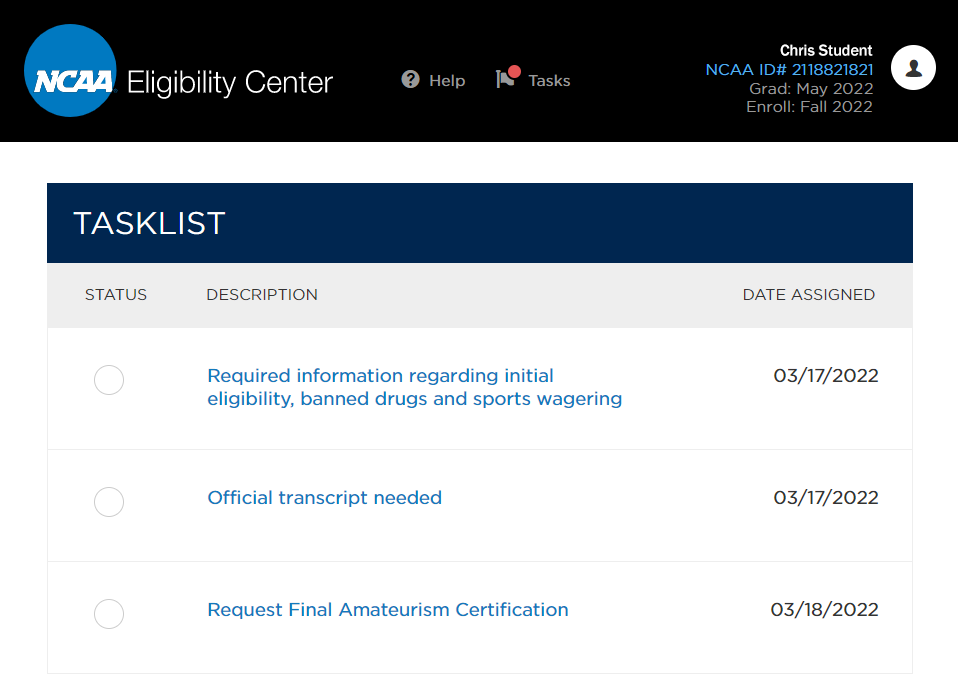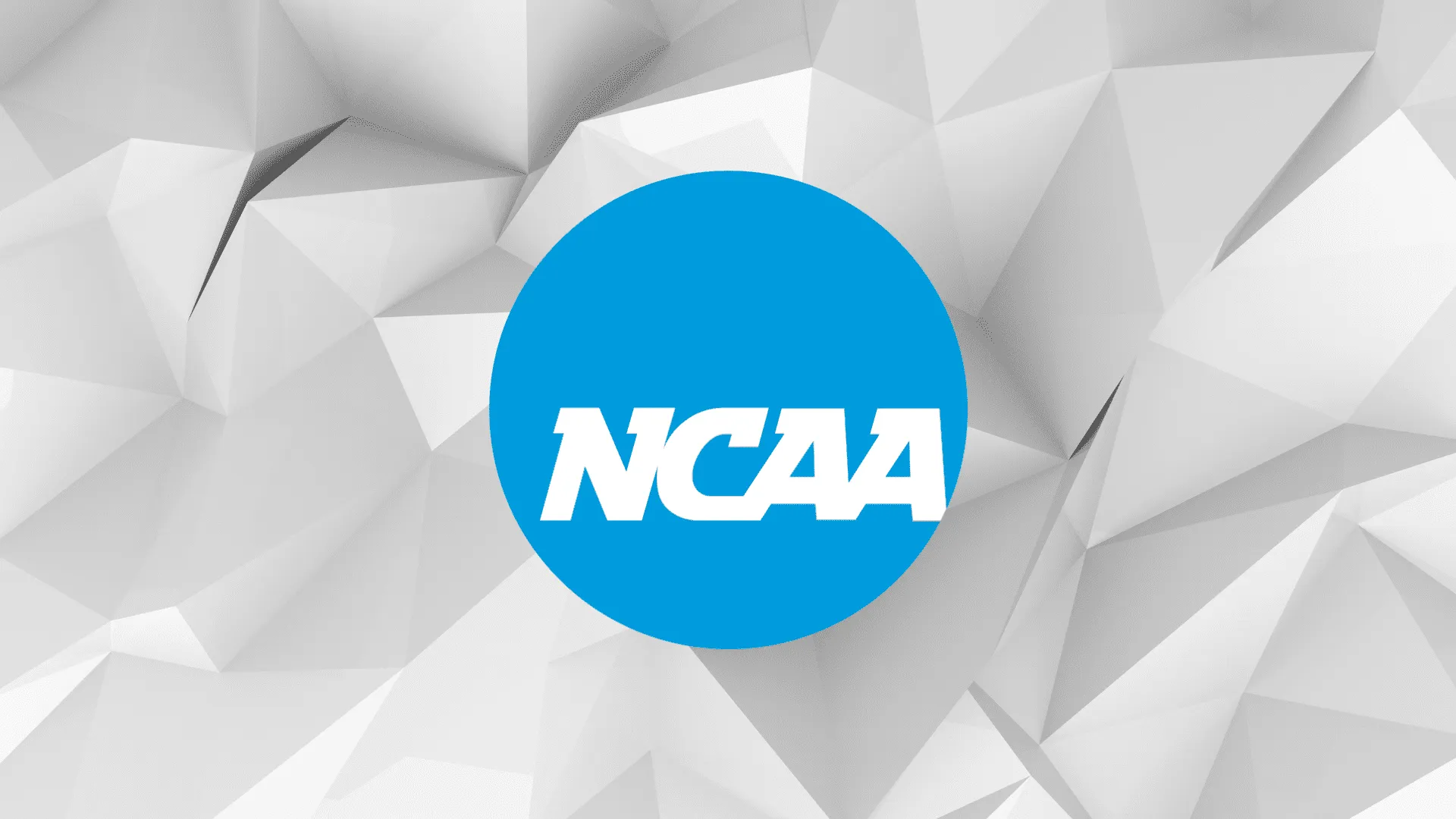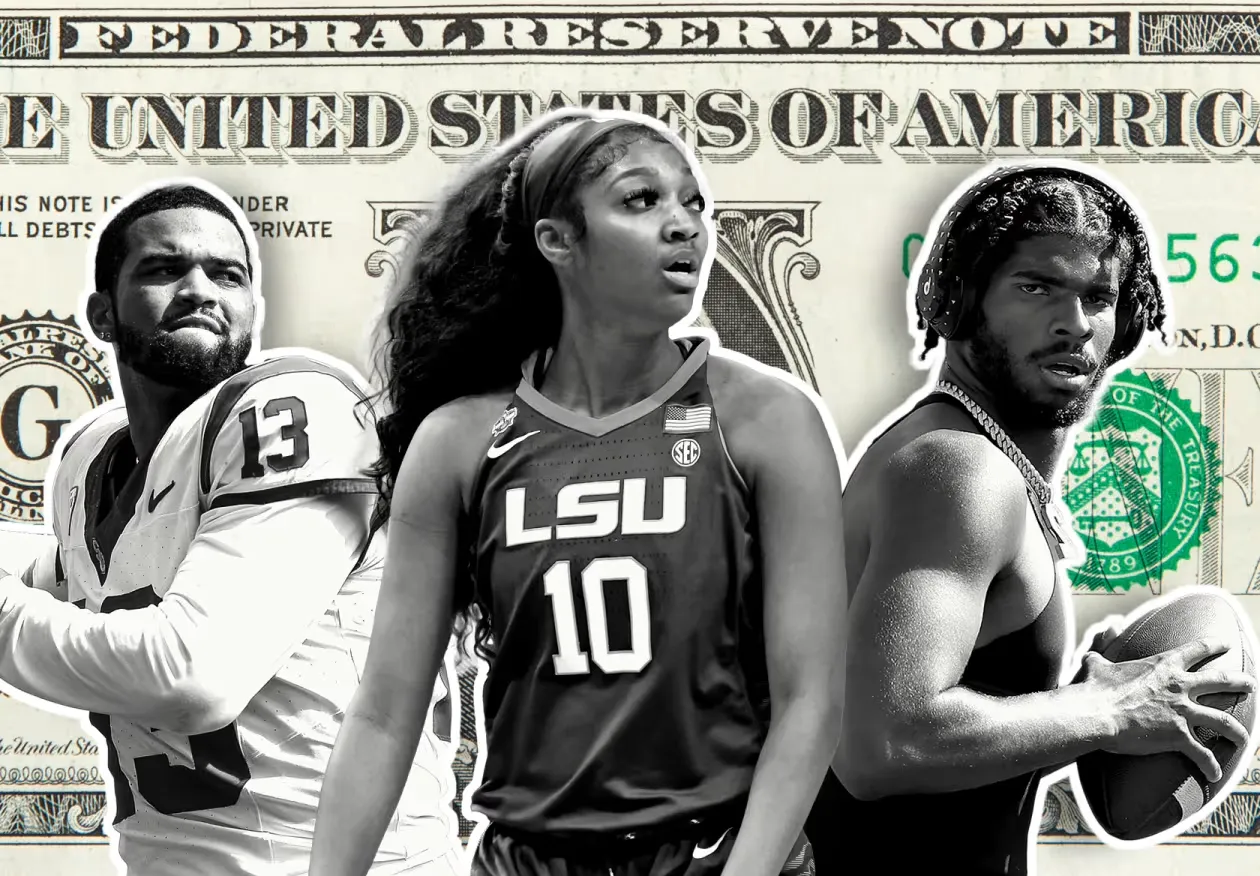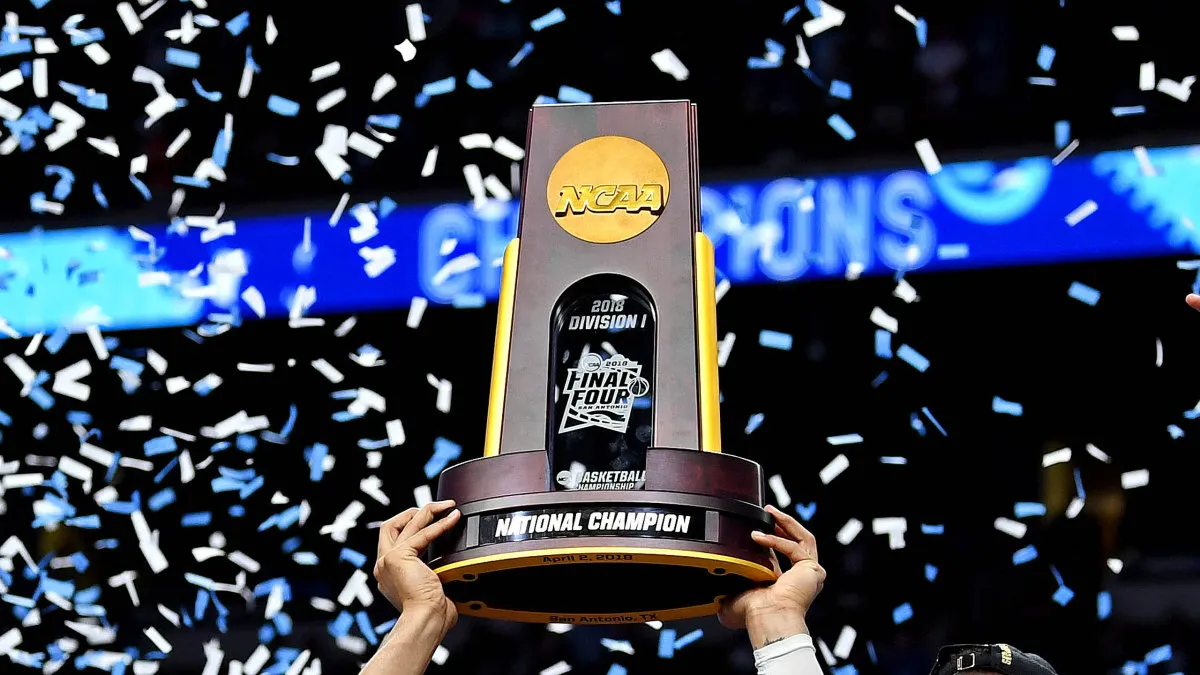NCAA Eligibility Center 101: Your Gateway to College Sports Eligibility

Maria Rezhylo
All-American swimmer & swim coach
For thousands of high-school athletes, earning a roster spot on an NCAA teamis the dream that motivates early-morning workouts, weekend tournaments, and countless hours in the weight room.
Yet a surprising number of families learn—sometimes far too late—that athletic talent alone is not enough.
Before coaches can officially add you to their squad list, the NCAA must certify that you meet its academic and amateur-status standards.
That gatekeeper is theNCAA Eligibility Center.
If the phrase sounds unfamiliar, you are not alone. Many students first hear about the Eligibility Center from a coach or older teammate midway through high school and scramble to play catch-up.
This guide demystifies the process.
By the end, you will know the following concrete steps to keep your college-sports goals on track, without the panic.

What is the NCAA Eligibility Center?
Think of the Eligibility Center as the NCAA'sadmissions office for college athletics.
Officially housed in Indianapolis, it reviews every prospective Division I and Division IIathlete's academic record (core courses, GPA, standardized-test scores when required), sports participation history, and amateur profile to confirm the student has not violated pay-for-play or agent rules.
Only after the Eligibility Center declares you "eligible" can your future college coach include you on an NCAA squad list or award an athletic scholarship.
Key Point:
Division III schools handle academic review themselves, so you do not need a full Eligibility Center certification to play D-III.International recruitsto D-III do, however, need an Amateurism-Only Certification account.

Why the Eligibility Center Exists
The NCAA launched what was then called the "Clearinghouse" in 1993 to create a single set of eligibility rules. Previously, each conference interpreted the requirements differently, creating confusion for both student-athletes and colleges.
Today's Eligibility Center enforces uniform academic criteria (16 NCAA-approved core courses for Division I, 16 for Division II, sliding GPA-test-score scales, etc.).
It polices amateurism so no team gains an unfair advantage.

Your NCAA Eligibility ID Number
When you open an account, the system assigns a unique 10-digit NCAA ID—sometimes called an Eligibility Number. Coaches will ask for this ID on recruitingquestionnaires and National Letter of Intent paperwork, so save it the moment your profile is created.
How to find your NCAA ID Number
After you complete the initial sign-up screens—name, address, high-school information, sport interests—the site lands you on your personal Dashboard. Your NCAA ID appears:
- In the top banner next to your name (desktop) or under the three-line mobile menu.
- Inside every auto-generated PDF (e.g., proof of registration), the Center emails after payment.
- On the 'Account Settings' tab.
If you misplace the number, just log in at eligibilitycenter.org, open My Account → Account Settings, and copy it.

You do not need to memorize it—save a screenshot to your phone and upload it to your recruiting folders.
Coaches will reference this ID in official NCAA software, so be sure it is accurate when completing questionnaires or signing a National Letter of Intent.
Understanding NCAA Amateurism & Certification Statuses
Even as college sports move toward a new revenue-sharing era, every prospect who hopes to suit up in Division I or Division II must still be declared an amateur by the NCAA Eligibility Center before they can practice, compete, or accept an athletic scholarship.
What does "amateur" mean today
At its core, amateurism status proves you have not already been paid to play sports, signed a professional contract, or used an agent in ways the rules forbid.
The compliance team checks whether you have:
| Still Allowed (under current regulations) | Likely to Trigger a Review | Almost Always Disqualifying |
|---|---|---|
| Name, Image & Likeness (NIL) deals that follow state law and school policy | Keeping over $10k in prize money and expenses | Signing a professional playing contract |
| Playing on club teams, travel teams, or academies | Using a professional-level agent to negotiate opportunities | Receiving a salary for competing in your sport |
| Training alongside a professional team (no pay) | Deferred payments, appearance fees, or free housing tied to athletic performance | Competing for a pro team after high school graduation without NCAA approval |
Why NCAA Amateurism Rules Matter:
A single violation can move you from Final Certified to Final Not Certified, costing both your roster spot and scholarship.

Types of Eligibility Center accounts

| Account Type | Who Uses It | What It Certifies |
|---|---|---|
| Free Profile Page Account | Freshmen/Sophomores exploring collegiate sports | Stores basic info; does not request certifications |
| Academic & Amateurism Certification Account ($100 U.S.; $160 international registration fee) | All Division I & II prospects (and most U.S. transfers) | Delivers both academic-core review and amateurism decision |
| Amateurism-Only Certification ($70) | International students heading to Division III | Focuses solely on amateur-status review |
The two certification checkpoints in the eligibility process
Preliminary Amateurism Certification
Automatically triggered when you finish the sport-participation questions in your account.
The Eligibility Center scans your answers for obvious red flags (e.g., pro contracts) and may ask for documents.
Final Amateurism
You must request this review on or after April 1 of your senior year (or when you sign a National Letter of Intent).
Log in, select your planned enrollment term, and click "Request Final Amateurism."
Coaches cannot add you to an official squad list until this step shows 'Final Certified' in green on their software dashboard.
Status definitions you will see in your Dashboard
| Status Label | What It Means | Typical Next Step |
|---|---|---|
| Final Certified | You cleared all amateurism rules. | Officially declared eligible. |
| Final Certified w/ Conditions | Minor issue resolved with conditions (e.g., repay small prize money). | Complete conditions; then you are eligible. |
| Final Not Certified | The NCAA found a rule violation that it cannot waive. | Appeal or consider a non-NCAA option. |
| Ready to Process | All documents are in; decision pending. | No action—wait. |
| Incomplete | Missing answers or documents. | Upload what the NCAA requested. |

Four tips to avoid amateurism pitfalls
- Track expenses for every event. Having receipts shows that the prize money is merely reimbursed for travel or equipment, a critical distinction in borderline cases.
- Ask before you sign. If a club or overseas league offers a stipend or appearance fee, please email your high school athletic director or college coach first.
- Be truthful on the questionnaire. The NCAA cross-checks public team rosters, prize lists, and media reports; omissions create bigger problems than honest mistakes.
- Request Final Amateurism early. Doing it the week you graduate leaves zero buffer if the NCAA asks for proof of your amateur standing.
When should I register with the NCAA Eligibility Center?
The NCAA rules officially state you can register as early as ninth grade (freshman year) and encourage athletes to do so "before starting high school" so families can plan core courses correctly.
In practice, most students complete the full Certification Account during their sophomore or junior year:
| Academic Year | Why This Timing Works |
|---|---|
| Freshman (Grade 9) | Create a Free Account on the NCAA Eligibility Center Websiteto receive NCAA reminders and link club teams. No payment required. |
| Sophomore (Grade 10) | Upgrade to a paid Certification Accountif Division I or II is realistic. The Center will then track courses from the sixth semester onward. |
| Junior (Grade 11) | The absolute latest recommended start is if you hope to sign a National Letter of Intent in November of your senior year. Delays here risk missing scholarship paperwork deadlines. |
| Senior (Grade 12) | Acceptable only if you are a late bloomer or transfer into the U.S. system. You must submit transcripts and any standardized test scores promptly. |
Why is early better
Registering no later than the end of the sophomore year ensures:
- Course planning: Your school counselor can verify that your science, math, English, and social-science classes meet NCAA Core-Course approval, avoiding a last-minute scramble senior year.
- Amateur-status tracking: The Center logs each club or semi-pro team you join, simplifying the final review.
- Coach confidence: Sharing your NCAA ID on recruiting questionnaires tells coaches you are serious and on track, bumping you ahead of athletes who still need to register.
Where to find step-by-step help:
For step-by-step instructions on how to register, visit ourNCAA eligibility registration guide.
How to submit transcripts to the NCAA Eligibility Center
Academic eligibility hinges on one document: your official high-school transcript.
The Eligibility Center only accepts transcripts directly from the school or an approved electronic provider; student-uploaded PDFs are rejected.
The standard workflow
| Step | Who Acts | Details |
|---|---|---|
| 1. Request | Student | Ask your counselor or registrar to send a six-semester transcript after junior year and a final transcript after graduation. |
| 2. Upload/Send | High School | Most U.S. schools use the High School Portal at eligibilitycenter.orgor an e-transcript service such asParchmentorScribbles. |
| 3. Processing | NCAA Staff | Electronic uploads post to your account the same day but can take up to three business days to review. Mailed hard copies require about one week. |
| 4. Confirmation | Student | Log in to your Dashboard and verify that the transcript shows "Received – Pending Review" or "Accepted." Follow up with your counselor if it still shows "Not Received" after five business days. |
Tips for a smooth submission
- Use electronic delivery whenever possible. The NCAA lists Parchment,National Student Clearinghouse, andScribblesas preferred partners for near-real-time receipt.
- Send transcripts from every high school. If you transferred or took accredited online courses, each institution must send its own record. The Center will not accept grades re-typed onto your primary school's transcript.
- Double-check names and graduation date. Discrepancies (e.g., "William" vs. "Will") can delay matching your transcript to the correct NCAA ID.
- Track status weekly. Your Dashboard updates when documents arrive; do not wait for an email alert.
After graduation: proof of amateurism
Once the Center receives your final transcript and you mark "Enroll" for the college you will attend, it will issue a Final Amateurism Certification.
Coaches need this green light before they can practice in preseason.
Monitor your Dashboard during the summer after senior year to ensure there are no last-minute red flags—an unpaid club invoice or misreported competition history can still derail eligibility.
Frequently Asked Questions
Does Division III require Eligibility Center registration?
Only international students headed to Division III are required to complete an Amateurism-Only account. Domestic students deal directly with campus compliance offices.
What if I take a gap year?
You must remain enrolled full-time (or seek a waiver) to preserve eligibility clocks. Registering early helps the NCAA track any post-graduation competition.
Are SAT or ACT scores still mandatory?
Since COVID-19, NCAA Division I and II have suspended standardized-test requirements through the 2024-25 cycle (subject to annual review). Consult your future college for admissions standards, which may still require scores.
What happens if my school's core courses aren't NCAA-approved?
Your high school counselor can submit syllabi for approval, but this takes time. Registering early allows you to swap classes before senior year, if necessary.
Wrapping Up Your Eligibility Prep
The NCAA Eligibility Center may seem like just another bureaucratic hurdle for college-bound student-athletes.
Still, in reality, it is your passport to the opportunities you have spent years training for.
By creating an account no later than sophomore or junior year, tracking your NCAA ID, and staying proactive about transcript submissions, you send a powerful signal to college coaches: "I'm ready for the next level, both on the field and in the classroom."
Treat the process with the same discipline you bring to practice:
- Mark registration and transcript deadlines on your calendar.
- Communicate regularly with your school counselor.
- Keep your Dashboard free of red flags.
Do that, and when National Signing Day arrives, the only "NCAA Clearinghouse" you will be thinking about is the one making your scholarship official.
Good luck, and enjoy the journey!



